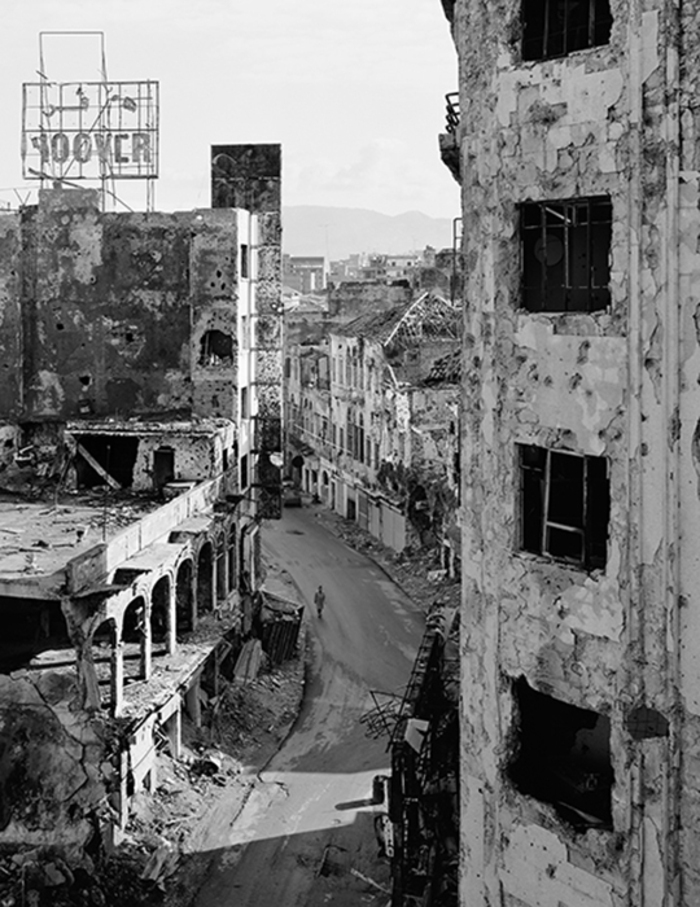
Gabriele Basilico “Back to Beirut”
- Exposition
- Exposition
- Location Galerie le Château d'Eau
-
Public
- Tout Public
- Tout Public
- À partir de 5 ans
Gabriele Basilico was one of the photographers of the mission that, in 1991, documented Beirut marked by the civil war. He returned three times.
The Italian photographer Gabriele Basilico (1944-2013) is considered one of the most important documentary photographers. For almost forty years, he has been looking at cities around the world and has developed a reflection on landscape photography. The exhibition "Back to Beirut", which presents for the first time the four photographic missions carried out in 1991, 2003, 2008 and 2011, documents the gradual reconstruction of the city and testifies to the photographer's great affection for the Lebanese capital.
A will to decrypt the urban space
In 1991, on the initiative of the Lebanese writer Dominique Eddé, the Hariri Foundation financed a documentary campaign on the city centre of Beirut, then almost destroyed after fifteen years of civil war. Gabriele Basilico, René Burri, Raymond Depardon, Fouad Elkoury, Robert Frank and Josef Koudelka all took part in the exhibition. This was followed by a book and an exhibition that have become landmarks.
Gabriele Basilico liked clear, structured, and completed projects, and he hardly ever retraced his steps. Beirut was a notable exception for him, as he visited it four times, took photographs there in black and white and in colour, and even exhibited part of his photographic investigation there. He had planned to publish a book comprising his four journeys, but he did not have enough time
Therefore, it is the first time that this work is shown in its entirety and that, on this occasion, Contrasto Editions is publishing the reference work. In this visual investigation, which was developed over twenty years, we find the characteristic and rigorous approach of the former architecture student. A permanent reflection on the meaning of frontality and view angles, a desire to decipher the urban space and make it legible. Gabriele Basilico was not a war photographer, and he did not know, at first, how to approach the destruction of the centre of the Lebanese capital. After the observation and immediate confrontation with the ruin, he decided to follow the reconstruction process. A form of optimism.
Christian Caujolle, Artistic Advisor
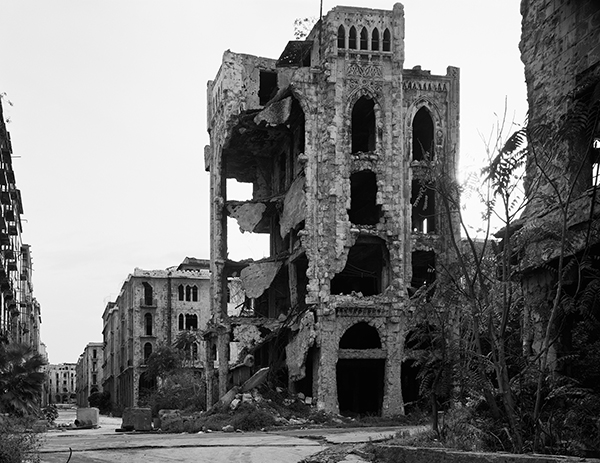

BOOK
All these trips presented for the first time
are accompanied by a book published by Contrasto.
Gabriele Basilico
“Ritorni a Beirut / Back to Beirut
1991 – 2003 – 2008 – 2011
Contrasto Editions
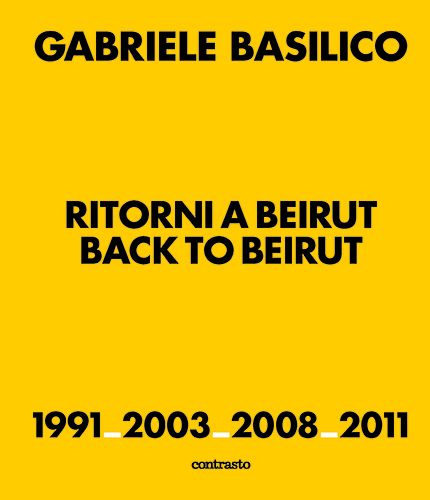
Photographing Beirut,by Gabriele Basilico “Ritorni a Beirut »
In 1991, I arrived in Beirut to photograph the city centre which had been damaged by the long civil war that began fifteen years earlier (1975).
It was not a matter of documenting the ruins, but of composing a “state of affairs” on the basis of a free and personal interpretation.
I have been photographing cities for many years, and I am very familiar with the rituals necessary to approach the exploration of a cityscape. But a wounded, ravaged city requires a particular sensitivity, calls for special attention, for participation but also respect.
First there is shock and pain in the face of the tragedy, then the fear and hesitation that precede the beginning of the ritual act of photographing, which requires consideration and a sense of responsibility.
Then something happens. perhaps the city is listening, senses the hesitation, sends out a message
and calmly releases you from the anxieties, helps to relax the transfixed gaze. A metaphysical silence follows, a pause after which you can act, observe, take the necessary steps.
Later, I returned to Beirut three more times to follow the reconstruction of the downtown area, which today appears magically resurrected in the new urban skyline
When I have the chance to do so, I return numerous times to places I have photographed. For me, it is the most interesting and effective way to establish a specific relationship, to be more involved with reality. Returning creates a unique state of mind: it is like waiting for a longed-for rendezvous, a reawakening of memory of places, objects, people, as if you are restarting the engine of a car that has been standing for some time.
In Beirut, it was more than this. Several years had gone by but nevertheless it was as though I were returning after time immemorial, a time without time that contained a small part of the history of the world, the memory of a world submerged in the physical reality of a place.
The current cityscape radically revolutionises the compact and coherent iconography of old Beirut.
Comments by Gabriele Basilico during his mission in Beirut in March 2012.
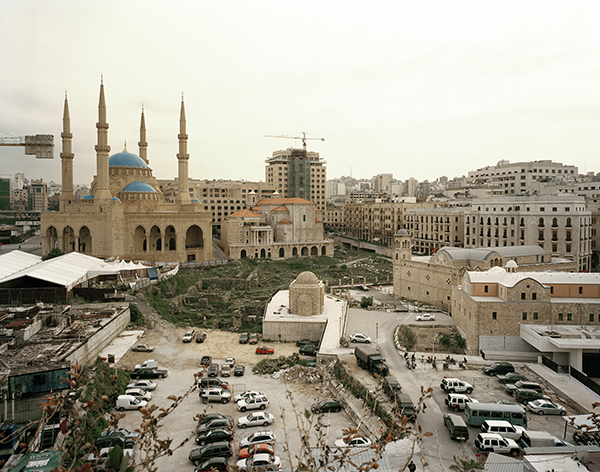
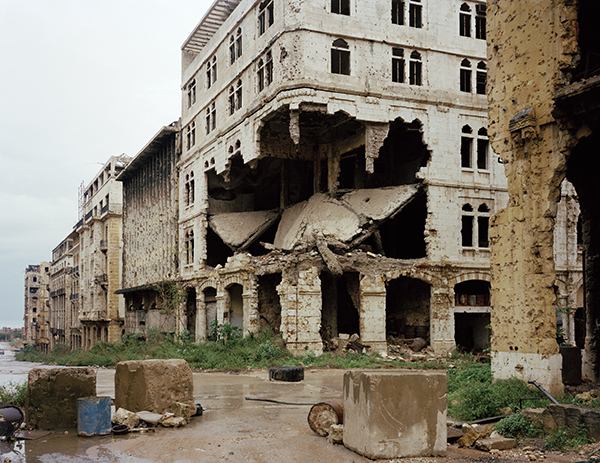
BIOGRAPHY OF THE ARTIST
Gabriele Basilico was an Italian photographer, born on August 12, 1944 and died on February 13, 2013 in Milan.
After graduating in Architecture at the Politecnico in Milan in 1973, he completely devoted himself to photography.
His first important research “Milano, ritratti di fabbriche”, presented in 1983 at the Padiglione d’Arte Contemporanea in Milan, was carried out between 1978 and 1980. His first assignment was in 1984 when he was invited to take part in the Mission Photographique de la DATAR, an important project whose aim was to document the transformations of the contemporary landscape, commissioned by the French government.
In 1991, he participated in a major Lebanese project on the city of Beirut, devastated by a fifteen-year long civil war.
- 2023 : « Back to Beirut », Galerie Le Château d’Eau
- 2015 : « Beirut 1991 » at the abbey of Jumièges
- 2012 : « Gabriele Basilico » au Pavillon Blanc de Colomiers
- 2008 : « Gabriele Basilico » au San Francisco Museum of Modern Art
- 2008 : Retrospective at the merz Foundation of Turin
- 2005 : Retrospective at the workshop del Bosco of the villa Médicis – Rome
- 2004 : « Arti e Architettura 1900-2000 » at Ducal Palace – Genoa
- 2004 : « Racconti di Paesaggio 1984-2004 » au Musée de la photographie contemporaine de Milan
- 2002 : « Provincia antiqua » at the Rencontres de la photographie, Arles
- 1996 : « L’esperienza dei luoghi » at the Cultural Center of Belém – Lisboa
- 1987 : « Paysage et architecture » at the Rencontres of Arles.
- 1978 : « Ritratti di fabbriche » at the Pavillon of contemporary art of Milan.

